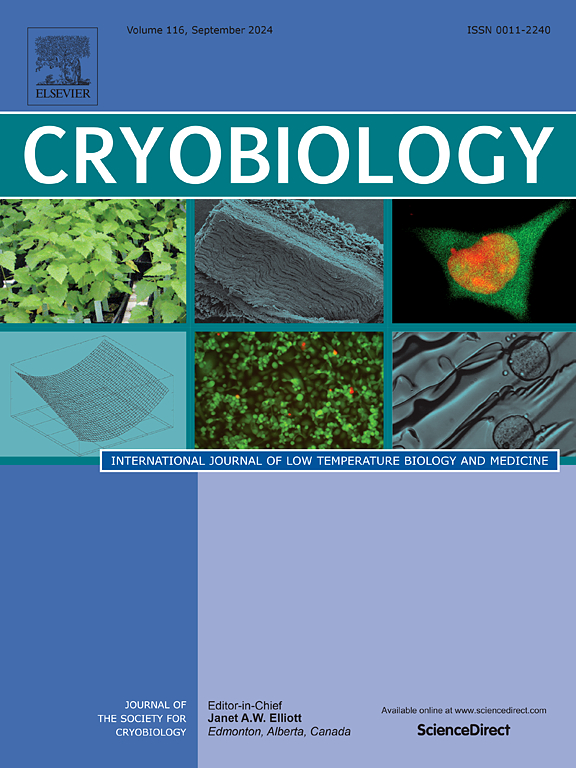microRNA在冬眠睡鼠肝脏代谢和能量消耗过程中的调节作用。
IF 2.1
3区 生物学
Q2 BIOLOGY
引用次数: 0
摘要
花园睡鼠(Eliomys quercinus)是一种储存脂肪的哺乳动物,每年冬眠一次,以减轻食物短缺、环境温度低和冬季特征的光周期减少的影响。像其他冬眠物种一样,这种动物通过下调非必需基因和过程来抑制其代谢率,以延长可用能量储存并限制整个季节的废物积累。MicroRNAs (miRNAs)是短的单链非编码rna,与mRNA结合并介导转录后抑制,使miRNA成为调节基因表达广泛变化的理想选择,包括以代谢率降低为典型的全球下调。利用下一代测序技术,我们分析了RNA-seq数据集,以确定睡鼠肝脏中哪些mirna在冬眠期间受到差异调节。我们发现19个mirna的表达在冬眠期间发生改变;然而,在纠正错误发现率后,只有一个主要的miRNA (miR-34a-5p)仍然显着下调。基因本体论和KEGG通路分析预测,能量代谢、组蛋白结合、染色质和染色体结合等核相关功能以及细胞周期等过程可能在冬眠期间因miRNA的调控而受到差异调控。综上所述,我们的数据表明,miRNA的影响似乎强烈地指向抑制细胞核中的能量密集型过程,从而有助于延长动物在冬眠期间的内源性燃料储备。本文章由计算机程序翻译,如有差异,请以英文原文为准。
The role of microRNA in the regulation of hepatic metabolism and energy-expensive processes in the hibernating dormouse
The garden dormouse (Eliomys quercinus) is a fat-storing mammal that undergoes annual periods of hibernation to mitigate the effects of food scarcity, low ambient temperatures, and reduced photoperiod that characterize winter. Like other hibernating species, this animal suppresses its metabolic rate by downregulating nonessential genes and processes in order to prolong available energy stores and limit waste accumulation throughout the season. MicroRNAs (miRNAs) are short, single-stranded, noncoding RNAs that bind to mRNA and mediate post-transcriptional suppression, making miRNA ideal for modulating widespread changes in gene expression, including global downregulation typified by metabolic rate depression. Using next-generation sequencing, we analyzed an RNA-seq dataset to determine which miRNAs are differentially regulated during hibernation in the dormouse liver. We found that the expression of 19 miRNAs was altered during hibernation; however, only one major miRNA (miR-34a-5p) remained significantly downregulated after correcting for false discovery rate. Gene Ontology, KEGG Pathway Analysis, and DIANA-miRPath predicted that energy metabolism, nuclear-related functions such as histone binding, chromatin- and chromosomal binding, and the cell cycle are processes that may be differentially regulated during hibernation due to miRNA regulation. Taken together, our data suggest that miRNA influence appears to be strongly directed toward suppressing energy-intensive processes in the nucleus hence contributing to extend the animal's endogenous fuel reserves for the duration of hibernation.
求助全文
通过发布文献求助,成功后即可免费获取论文全文。
去求助
来源期刊

Cryobiology
生物-生理学
CiteScore
5.40
自引率
7.40%
发文量
71
审稿时长
56 days
期刊介绍:
Cryobiology: International Journal of Low Temperature Biology and Medicine publishes research articles on all aspects of low temperature biology and medicine.
Research Areas include:
• Cryoprotective additives and their pharmacological actions
• Cryosurgery
• Freeze-drying
• Freezing
• Frost hardiness in plants
• Hibernation
• Hypothermia
• Medical applications of reduced temperature
• Perfusion of organs
• All pertinent methodologies
Cryobiology is the official journal of the Society for Cryobiology.
 求助内容:
求助内容: 应助结果提醒方式:
应助结果提醒方式:


